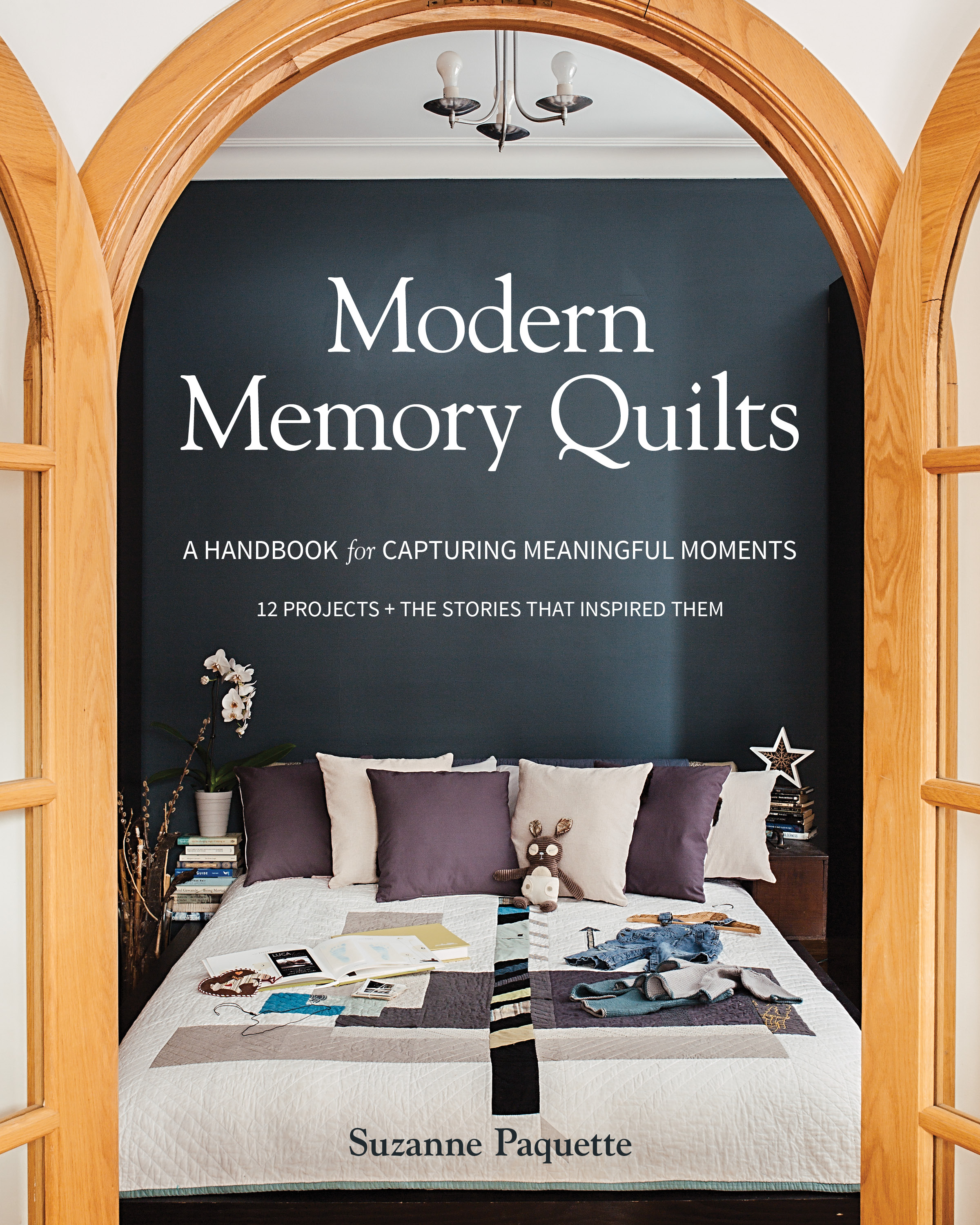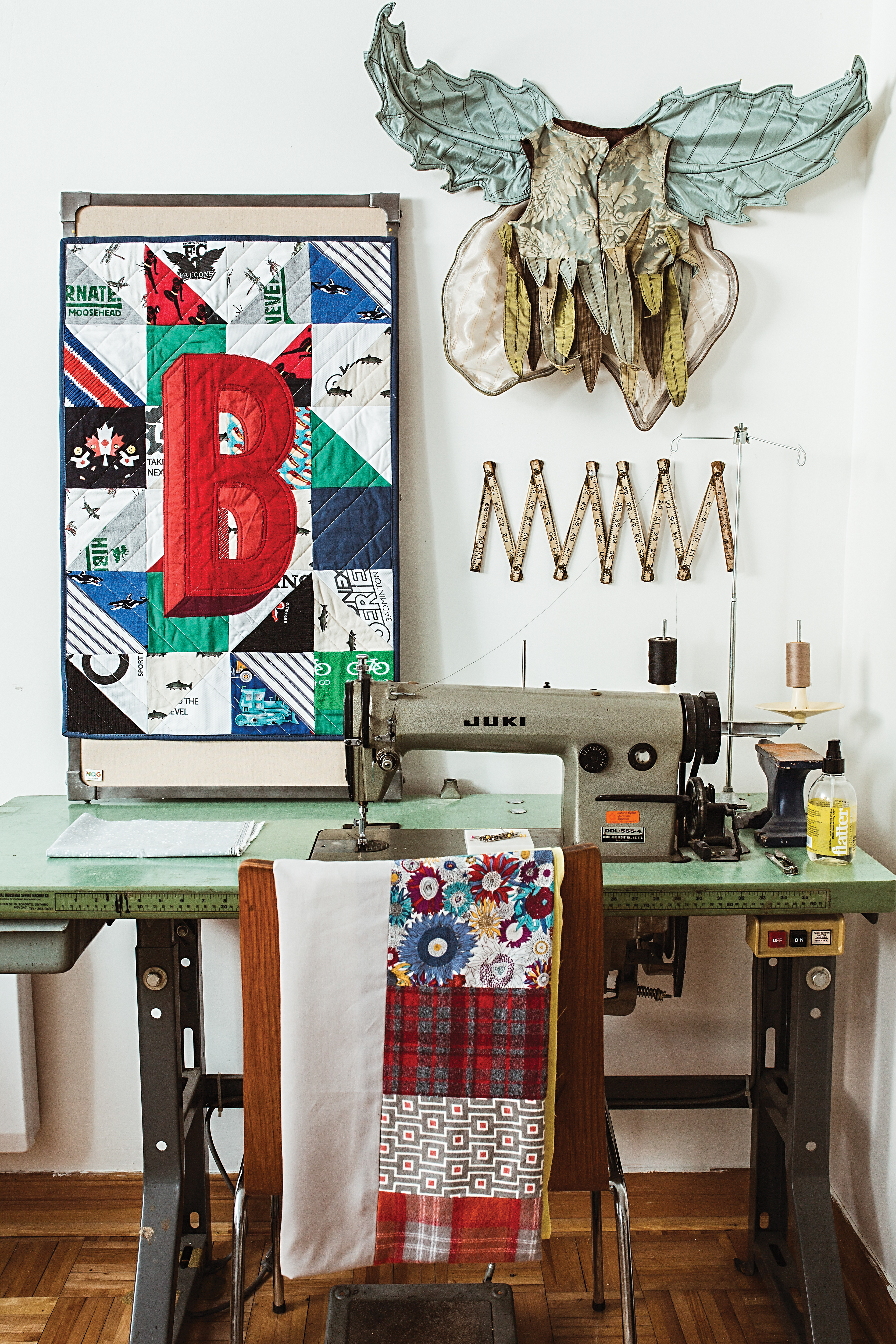Make quilts to Cherish for a Lifetime
Nov 16th 2020
The following information is from Modern Memory Quilts by Suzanne Paquette. Get inspired to make personal quilts your family will love.

Remembering
When working on a personal project, I look at photos, journal entries, and other physical keepsakes to remember and look for recurring patterns in the details. Listening to music or someone’s voice, or experiencing the feel and smell of their clothing, can also be powerful reminders.
Specific pieces of clothing might conjure up particular memories and give inspiration for the quilt’s theme. I always start with how something or someone makes me feel and then figure out how to put those feelings in quilt form through shape, color, layout, movement, and texture.
Documenting
The first time I made a modern heirloom memory quilt, it was from my son’s baby clothes. I will never forget the first cut of my shears into the tiny onesie. Instead of “measure twice, cut once,” it was more like “measure twenty times, hold your breath, cut, and hope for the best!”
It gets easier with each piece of clothing—and it’s almost always easier with someone else’s clothing. I’ve also come to believe that even a “wrong” cut can be turned into a “right” cut. If things don’t go according to plan, you will figure it out. Sometimes you end up with something even better than you imagined.
Photographing Clothing
It’s never a bad idea to photograph clothing before you cut it up—especially the outfit your kid wore home from the hospital. Or your wedding dress. Or your mother’s favorite shirt. Preserving meaningful clothing through photos is a great way to hold on to the memories without taking up closet space.
For every memory quilt I make, I photograph all the clothing. Whether the photographs make their way into albums or scrapbooks or just sit quietly on a hard drive, I’ve found that people (including myself) like to have the original pieces documented just in case.
You can go as simple or complex as you like. I often photograph it fairly simply, using a white background and hanging the garment on a nice hanger, lying it flat, or washi taping it to the wall.

Perspective
Because memory quiltmaking is emotional by nature, timing and perspective are key when selecting clothing.
I have found that most people are not ready to part with the clothing of a loved one who has passed until at least a few years after their death. Grief, of course, is a very personal experience, devoid of a linear path. We each need time to process loss in our own way.
When a friend or family member has lost someone, I gently remind them to keep their loved one’s clothing, or at least their favorite pieces, if there is any possibility that they might want a quilt made. Even a few pieces can make a meaningful quilt.
People are often upset after giving their children’s sentimental clothes away. It’s never too late to start saving. If the baby clothing is gone, start saving toddler clothing or school-age, teenager, or adult clothing. One day, those clothes will be just as filled with memories as the baby clothes.
At the end of each season, I separate clothes that no longer fit my son into quilt, donate, and toss piles. This keeps things manageable and ensures that the pieces I won’t use in a quilt aren’t cluttering up our storage. Less frequently, our adult clothes that are worn out or that we are tired of get sorted into the same piles.
Sometimes after keeping clothing for a season or two, my perspective on it changes. If I can’t remember why I hung on to something and I don’t particularly like it, I usually remove it from the stash. Like fabric, there rarely seems to be a problem of “too little clothing” when you regularly collect it.
Empathy & Design
Soon after I started making memory quilts for other people, it became clear that understanding the story and feelings behind the quilt was para-mount in guiding the design process. It wasn’t about me and my creative vision—it was about the person who would love and use the quilt.
When I meet a client or friend for a new commission, I go through the cloth-ing with them and ask them to tell me about the pieces and the associated person or event. A new story emerges that guides the quilt design.
In the interviews for this book, I asked the same series of questions to each person. Every single person had an underlying theme to his or her answers. This helped me make design decisions for each quilt.
If you are making a quilt for someone and would like to have a conversation with them, try asking them the questions from the memory quiltmaking interview.
If you are making a memory quilt for yourself, I still encourage you to answer the interview questions. An underlying theme may emerge—one that you maybe hadn’t realized was there.
Memory Quiltmaking Interview
1. Whose clothing will be used to make this quilt? What is your favorite memory of them? What do you most admire about them?
2. What are a few of your favorite pieces of clothing that you chose for the quilt? Are there any specific memories or feelings that you associate with these pieces?
3. Why do you want to have a quilt with your loved one’s clothing made?
4. What feels like love to you? What does the love of this person/people feel like to you?
5. What story do you want your kids, grandkids, friends, or future generations to know about the clothing in this quilt, who it belonged to, and your relationship to them?
Enter our giveaway to win a free ebook copy of Modern Memory Quilts
-
Inspired to start your own memory quilt? Shop Modern Memory Quilts







